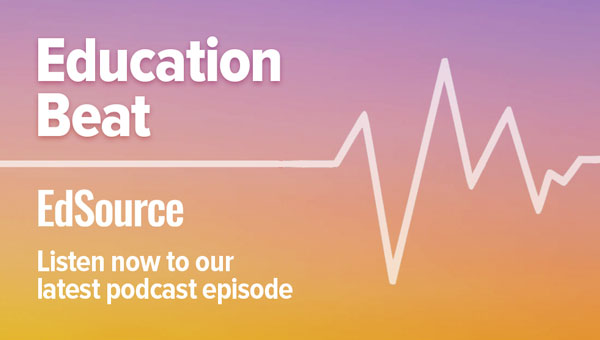DISTANCE LEARNING
‘Looking at the whole child’: State leaders discuss ways to improve students’ mental health

PUBLISHED
JULY 23, 2024


July 18, 2024 - Misty Her is the first woman to lead Fresno Unified since its inception in 1873, and the first Hmong person, in a district where 10% of English learners speak Hmong at home.
SUBSCRIBE AND VIEW MORE

The pandemic, school closures and economic downturn are still leading to mental health challenges for students.
Alison Yin/EdSource
Bringing more mental health professionals onto campuses, training teachers and reducing negative stigmas surrounding mental illness are critical to students’ wellbeing, according to experts at Friday’s Select Committee on School Climate and Student Safety meeting.
From kindergarteners to high school seniors, students across California are still struggling with mental health challenges in the aftermath of the Covid-19 pandemic — and districts across the state have come up with various strategies to provide support.
“We need to shed light on the current state of student mental health, identify key challenges and explore potential solutions,” said State Senator Susan Rubio (D-Baldwin Park), who led the discussion.
Mental health challenges
While most of society has moved on from the Covid-19 pandemic, a large proportion of students have not.
“A lot of us — not only children, but adults as well — we became a lot more isolated,” said Jonathan Wicks, a social worker at YWCA San Gabriel Valley, at Friday’s hearing. “Now that we’re all reintegrating back into social spaces, a lot of times, it’s not as easy to connect, and so that connectedness that belongingness isn’t always there.”
Most mental health conditions start to manifest when someone is in their youth or young adulthood; Jeannine Topalian, former president of California Association of School Psychologists, who also serves on the California’s Advisory Commission on Special Education, cited an ACLU report which found that more than 63% of students reported experiencing an emotional meltdown, while nearly half said they were depressed.
Wicks added that over the past few years, young people have increasingly turned to marijuana and other substances to cope, which has led some to “over indulging and going into psychosis.”
Mental health staff
Schools often don’t have the staffing and resources to support struggling students.
According to Topalian, there are 1,041 students for every school psychologist in California and 7,308 students for every social worker.
“There are six year olds out there who are in crisis today, who are in need of a lot of support from mental health professionals,” she said. “And what better place than a school where that’s the hub of the community to provide these services.”
Mental health professionals at schools are overwhelmed with hefty caseloads which makes it harder to pay attention to students’ individual needs or to take a more preventative approach.
Loretta Whitson, executive director of the California Association of School Counselors, said that some progress has been made in California’s counselor-to-student ratio. In the 2012-13 academic year, the ratio was 826 students to one counselor. Now, it’s roughly half that.
“I think 800 would be more like urgent care. We’re responding to crises,” she said. “….When you have 400, then you are able to do comprehensive strategic work.”
The national suggestion is a 250:1 ratio, she added.
“We’re not where we want to be…., but we’re moving in the right direction,” Whitson said, adding that there are more counseling services in elementary schools now, where students start learning social skills and ways to cope.
Fifty percent of all school counselors nationwide in California, and 33 university programs in the state are turning out new counselors, Whitson added.
A ‘first line of defense’: involving teachers
Involving teachers is a critical support for students in their mental health challenges, the speakers agreed.
Kim Griffin Esperon, a project director of Mental Health & School Counseling at the Los Angeles County Office of Education, emphasized the importance of creating step-by-step protocols that teachers and staff can be trained to implement.
Teachers should also be provided with guidelines to help them spot signs of depression, and their input should always be considered, Topalian said.
“We often tell teachers or staff what to do. It’s very important to think about asking them what they need and where their skill set is before we implement or develop programs,” she said. “They need to be part of the process rather than being the people who are in the frontline trying to do this work for our students.”
Off campus
Reducing the stigma around mental illness is also critical to students accessing support, the speakers agreed.
“Traditionally, schools and communities have understood mental health supports and services to be necessarily only for those students who have been identified as having a mental health disorder, or they have assumed that all students experiencing mental health challenges require intensive mental health interventions,” Esperon said.
“Fortunately, our understanding has evolved to refocus our attention on prevention and earlier identification of students who are struggling as well as referral to the appropriate level of services to meet students’ needs.”
Wicks said there are several intergenerational families in the San Gabriel Valley — which can make it harder for students to access support because of varied attitudes toward mental health support and counseling.
“I could see the challenge, you know, for the youth to hear the information and maybe want to move in that direction [of seeking help],” Wicks said. “But when they would go home and have those discussions, they would kind of come back with a ‘No thank you.’”
He added that youth advisory opportunities, where students can interact with one another, can be particularly helpful. And some districts have explored peer-to-peer counseling, which can also reduce students’ feelings of isolation.
Other ways to expand access
The Los Angeles Unified School District has attempted to expand community outreach to reduce stigmas around mental illness — while using Telehealth options to provide students with mental health supports, according to the district’s Administrator of Student Health and Human Services Joel Cisneros.
He said LAUSD also has its own psychiatric emergency response team, which intervenes in crises where students could harm themselves or someone else.
“[It’s] going beyond the idea that we’re just producing students to an academic process in order to graduate and to be successful,” Whitson said. “It’s also looking at the whole child. And that shift in perspective, I think, is really contributing to some of the changes that we’re trying to do.”











